- Steve Ramos Media
- About
- Work
- Blog
- Tribeca Film Festival creates new model with TFI Interactive
- Creative sparks of inspiration courtesy of a design conference named ‘OFFF’ and an art museum exhibition titled ‘ON!’
- How I Helped Brink Transform Conferences in the Live-Streaming Era
- How a Branded Pop Up Uses Interactivity to Showcase IoT Tech
- How SR Media Helped CreativeFuture Showcase the Value of Storytelling
- How I Helped Procter & Gamble Design an Onsite Experience that Inspires Agile Innovation
- Features
- Contact
Startup Grind Global Conference Forecast. 5 Trends out of Redwood City that will help you grow your business .
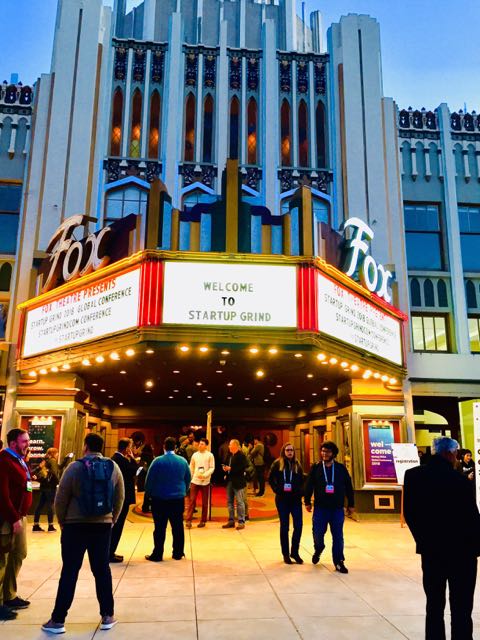
Here are five concepts from Startup Grind that look to inspire startup founders.
The dealmaking flits between a corner Starbucks and a nearby Philz Coffee in Redwood City, California, a pop-up hub in the bay area’s tech universe during the two-day run of the 2018 Startup Grind Global Conference. Packlane, an online printing company that delivers affordable packaging to brands of all sizes, is the winner of the Startup Grind startup competition.
Other startups include BookBandit, an online book exchange for students, Brandzy, an innovative branding platform, and Supportbench Services, a customizable, customer service platform, and Juble it, a digital media and fintech company bringing crowdfunding tools to creators. Juble it is also the startup that brought me to Startup Grind as a chief storyteller to help with their product launch and content marketing.
Farmkart CEO Atul Patider and Platforum Co-founder Britney Schielack talk about the costs of bringing products and services to Startup Grind. All of our conversations lead to an inevitable conference question for startup founders: Are the resources spent getting in and getting to Startup Grind worth it?
For the 130 select companies chosen to exhibit at Startup Grind, what’s immediately evident are the quality of the feedback and responses thanks to the thought leadership and influence of the conference attendees. If you’re looking for valuable feedback to your tech products and services, Startup Grind delivers a community like no other.
“It’s all about evolving,” Derek Anderson, Founder, and CEO, Startup Grind, says, speaking at the closing remarks. “What entrepreneurship means to me is evolution.”
What’s also evident at Startup Grind is the spirit of generosity and support spread throughout the two-day event. Founders from other conference exhibitors like Hive Refrigeration and CoFit take time away from marketing their companies to ask great questions about Juble it and discuss affiliate partnerships.
Tech ecosystems are often competitive to the point of being cutthroat. Sure, there’s hustle at Startup Grind and competition to land some coveted, investor meets at Starbucks or elsewhere. There’s also a strong spirit of community and support for each company in attendance. If you take the time to connect with attendees and share your stories, Startup Grind transforms into a powerful, open, focus group providing valuable product feedback.
See You in Redwood City!
For Startup Grind’s two brainstorming days, life is turned upside-down in Redwood City, a town on Highway 101 with as many working-class pockets as tech-leaning neighborhoods. It’s a vibrant backdrop for startup founders looking to make an impression on the world’s leading tech startup ecosystem.
Coffee bar dealmaking and VC panels reveal the stark, business realities facing tech startup founders coming to the bay area to promote their companies. You have to rise above local startups out Stanford University and University of California, Berkeley, who can network 24/7. You also have to make every offline, onsite contact matter. That way, you can successfully reconnect and begin customer traction after your startup team returns home.
Come to Redwood City with curiosity and, the discoveries and thought leadership from conference speakers would continue to inspire long after you return to your hometown startup ecosystems. For many startup founders, chances are you did not leave Redwood City with a VC’s term sheet. However, you did exit with valuable feedback, inspiration, and encouragement to take your company to market-entry, market fit, customer traction, and beyond.
Here are five concepts shared at Startup Grind that look to inspire startup founders.
- ‘Don’t fall in love with your solution. Fall in love with your problems.’ – Alex Chriss, SVP + Chief Product Product Officer, Intuit
Alex Chriss, SVP + Chief Product Officer, Intuit, explains the value of focusing on customer problems. Focusing on issues increases the likelihood of developing products and services Intuit customers want and need tomorrow. For all the small companies in attendance, Chriss’ ‘Big Co’ examples are inspiring and relevant.
- ‘Keep the global effect but balance with localization in individual markets…work with your communities and source content from your communities.’ – Adi Tatarko, co-founder and CEO, Houzz
Company founders frequently address scale challenges in a strict, spreadsheet manner. How much do I invest in sales and marketing to reach additional markets for my software? What are the other supply chain costs for my tech product? Do I have sufficient data and research to make quality decisions regarding growth? These are all top-down, leadership questions. Speaking about her company’s expansion into Britain, Adi Tatarko, co-founder and CEO, Houzz, emphasizes a bottom-up, civic-oriented approach. Listening to Tatarko, you realize the importance of customizing your product and service via 24/7 connectivity with new and potential customers.
3.’ Clear intent is necessary to bring value to customers.’ – Gillian Tans, CEO, Booking.com
Startup founders representing the 130 select companies chosen to exhibit at the Startup Grind understand the value propositions driving their products and services. However, Gillian Tans, CEO, Booking.com, dives deeper into a company’s value prop as well as their spirit and tone. To better achieve your market benchmarks, Tans tells attendees to focus on your company’s intent and your aims clear and understandable to your customers. It’s intent that drives market fit as well as customer traction.
- ‘No founder ever presents a crappy value prop…so try to discern the holes in your story because VCs are paid to be cynical and probe for weaknesses.’ – Jeff Jordan, Partner, Andreessen Horowitz.
Jeff Jordan, Partner, Andreessen Horowitz, delivers a call to action to startup founders to identify the holes in their startup’s stories. By readily revealing company challenges and weakness, they’ll end up sharing a grounded pitch to potential investors instead of Cinderella stories. A balanced story that includes both company strengths and challenges will resonate better than any ‘we’re all going to get rich’ pitch.
- ‘Startups will be the great companies of tomorrow.’ – Dr. Andrew Ng, Founder, and CEO, deeplearning.ai
Dr. Andrew Ng, Founder, and CEO, deeplearning.ai, outlines why AI will be the next electricity and driver of systems change. Ng also believes that frontier tech startups will be tomorrow’s corporate giants. Ng’s words are compelling calls to action to Startup Grind company founders.
Thanks to Startup Grind, there are startup founders whose lives will dramatically change for the better. For others, the impact may occur with their companies. Are you a Startup Grind alum? Share your insights and takeaways via Twitter @steveramosmedia or Instagram @originalfeed
Steve Ramos Media on Five Actionable Takeaways From Good Discovery(s) Civic Design Festival
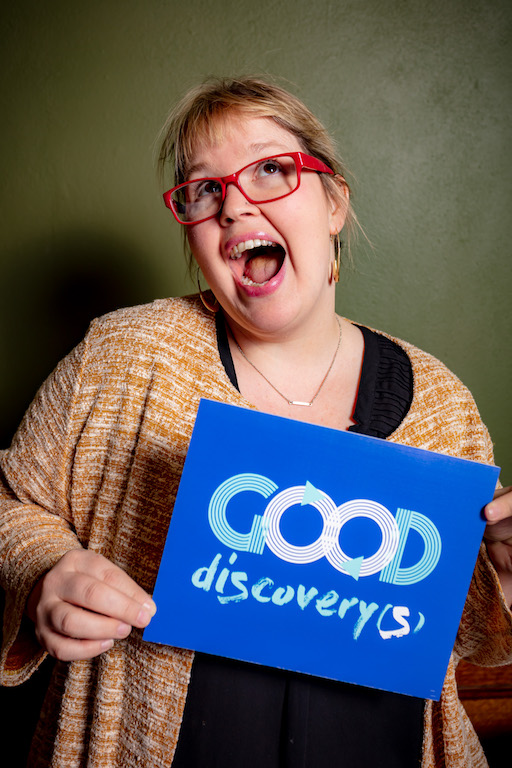
Great feedback from attendees, panelists, and presenters at Good Discovery(s) Civic Design Festival. Here are Five Actionable Takeaways to Help You Build A Civic Design Community.
Some call the Good Discovery(s) civic design festival; which launched March 26 at Memorial Hall OTR in Cincinnati; an experience.
“Wow,” a friend says to me. “You’re good at building experiences.”
Others describe Good Discovery(s) as an event; as in you’re focusing on event marketing as much as writing these days. The conversations between attendees and presenters; team members and panelists continue to flesh out our messaging and values.
Good Discovery(s) is a design conference. It’s an ideas festival. We’re building an interactive marketing summit.
My answer, as the leader of the festival team, emphasizes the startup process and spirit driving our work.
Good Discovery(s) is an interactive design product. More importantly, for our team, Good Discovery(s) is a High Opportunities project with moonshot potential.
Attendees share a day of brainstorms, keynotes, networking, and panels from artists, designers, and entrepreneurs impacting our community for good. After the program wraps, they share their enthusiasm for the return of the Good Discovery(s) civic design festival in March 2020.
There are opportunities for members of the Good Discovery(s) tribe to stay connected via 2019 meetups, as well as the 2019 Cincinnati Podcast Festival. I’m excited for the next steps in community building from our festival team including Sean C. Davis, Founder of the podcast Squirrel Stories, Co-founder Good Discovery(s) and Cincinnati Podcast Festival as well as a Senior Software Developer at Ample.
Will Whitney Dixon, graphic artist and founder of the creative agency Pixxel Designs and Kailah Ware, an emerging mixed media artist and former People’s Liberty grantee, help ignite a Good Discovery(s) video series and online curriculum?
After providing social media marketing in support of the first Good Discovery(s), Tamia Stinson, founder of Tether, a community and talent agency for creative image-makers, may continue to build our community both online and onsite.
After his success as the lead programmer for our festival’s Food Innovation track and as the repeat entrepreneur behind green startups Last Mile Food Rescue, Fourth Harvest, and Epicure Cincinnati, Jeffrey Miller continues to advocate Cincinnati as a hub for food innovation. Looking ahead to 2020, how will Miller enhance Good Discovery(s) programming dedicated to reducing food waste?
Imagine the Good Discovery(s) podcast series. Think about what you’ll learn from Good Discovery(s) webinars. Look ahead and see a core festival growing in Cincinnati along with a global network of events.
Yes; our potential is a moonshot. Join us. Become a member of the Good Discovery(s) tribe.
Here are Five Five Actionable Takeaways from the first Good Discovery(s) civic design festival to build a community focused on social enterprise.
- Transform Equity from Creative Concept to Daily Actions
For many people, equity is a concept to source when building products and services that impact communities. Ramsey Ford, a design director at Design Impact, describes transforming fairness from idea to action. Initial steps include building trust, challenging biases, and learning together.
- One Person Alone Can Ignite System Change
System change, transforming the components, networks, processes, and structures that determine how communities, industries, and sectors operate, requires corporate-like scale and operations. That’s mainstream thinking; the belief that an innovator has to partner with a corporate to ignite disruption on the level of system change.
Tina Dyehouse, a dispute resolution professional; experienced government employee and the creative force behind City Ombudsman, a digital platform for problem-solving quality-of-life issues, shares a new model for system change with Good Discovery(s) attendees. By learning how to transform classic forms of bureaucracy from obstacles into tools for good, you gain the ability to single-handedly ignite system change and attract corporate partners to your efforts.
- Your design can transform entire cities when you embrace the Collective “Good.”
Civic design, meaning design products or services that impact communities for good, is a creative concept that emphasizes your deliverables and end products. Andy Cluxton, Director of Communications Strategy, and Nick Dew, Creative Director at the creative studio BLDG, share what needs to be part of successful civic design projects. In your engagement, smart strategy and identity design, you need to embrace the Collective “Good” and look past your direct customer to the community around the work. It’s how BLDG elevated the Northern Kentucky city of Covington from an ugly stepsister to Cincinnati to the desired home for young creatives and their startup businesses. Imagine what you can do when you embrace the Collective “Good.”
- Build Communities and Ignite Influence Via A Joyful Career
Empathy and empathetic design continue to be popular approaches in the branding and marketing communities. A core theme behind this thinking is empathy for others; especially your customers. Publisher, entrepreneur, and musician Jeremy Gotwals flips the table for the Good Discovery(s) tribe. He wants creatives to embrace empathy for themselves as much as others. It’s key to his goal of achieving a joyful career. Because once you attain pure joy, you can better build communities of advocates, collaborators, and customers as well as ignite influence.
- Build a Design Experience that Prioritizes Purpose More Than Paychecks
Most design and marketing conferences our team emphasize business and sales development. That’s fine, but Good Discovery(s) is an ideas festival. Our presenters are creatives impacting communities for good in the areas of art, food innovation, wellness, and startups. Our trade floor delivers civic art activations on the topics of community, food, and immigration. Our social enterprise agenda provides one of the most diverse conference rosters we’ve ever experienced.
Good Discovery(s) is a design experience that prioritizes purpose more than paychecks. That’s what sets us apart from marketing conferences with sessions on learning the latest Facebook algorithms. Our expertise matches the values of Generation Z and Millennials and will grow as more of these creative customers seek out festivals.
TAG LINE:
Learn more about Good Discovery(s) civic design festival at gooddiscoverys.com and sign up for our newsletters and all our events.
At his core, Steve Ramos is a content marketer building amazing stories that help businesses grow. He’s also a published author and his culture, science and tech stories appear in ‘QZ/Atlantic Media,’ ‘Fast Company’ and ‘NY Mag.’ In fact, it was his ‘Fast Company’ story on filmmaker Joss Whedon, Why You Need a Creative Shift Instead of a Vacation,’ that inspired his creative shift from media into branding, content marketing, and strategy.
Steve Ramos Media on Five Key Values for Launching a Successful Podcast Festival
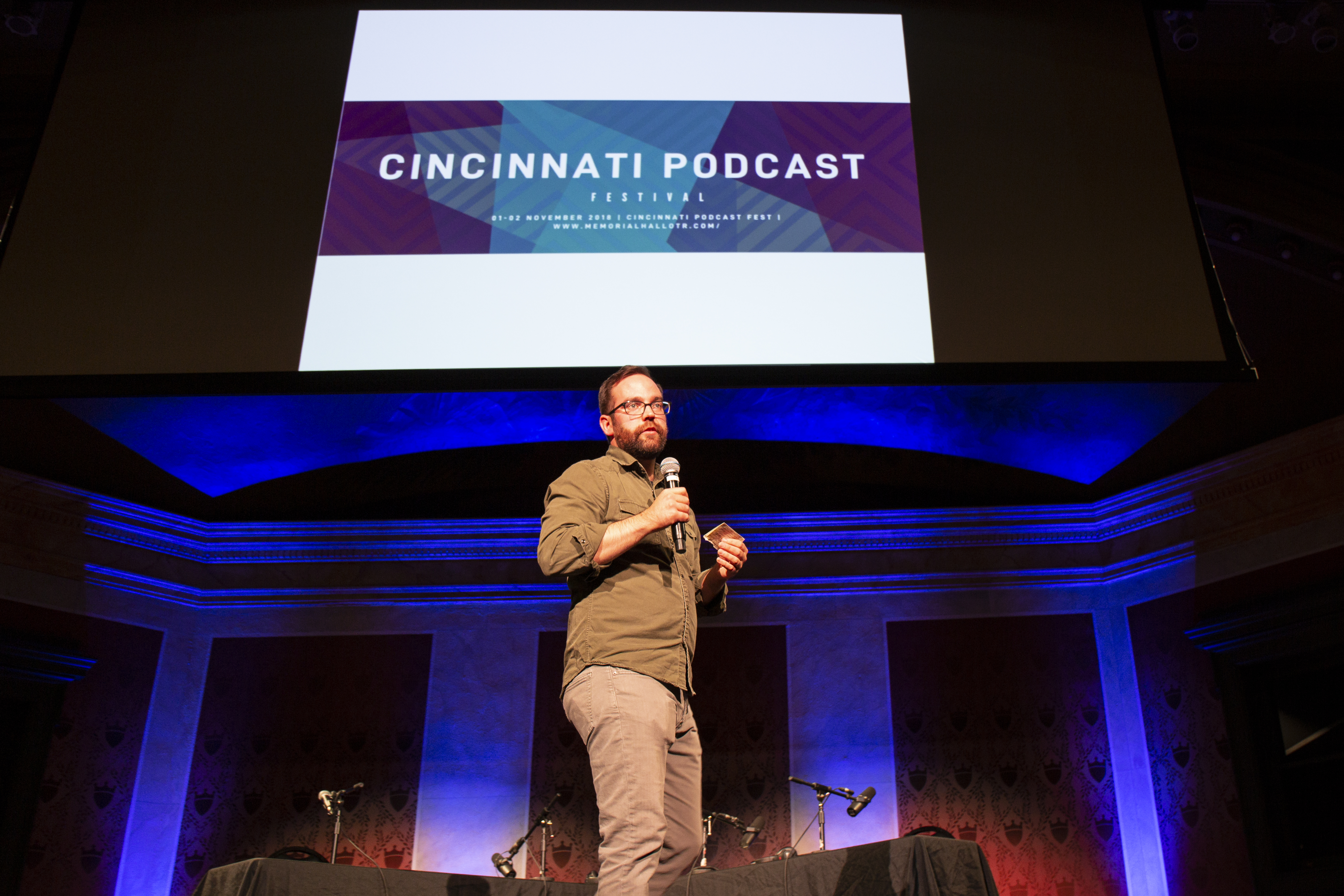
Magnificent experience building Cincinnati’s First Podcast Festival at Memorial Hall OTR. Here are Five Values to Help You Launch a Successful Design Experience.
The power behind interactive storytelling projects is that it drives and ignites future interactive projects across diverse industries and varieties of scale. The inspiration for Cincinnati’s First Podcast Festival, taking place Thursday, November 1 and Friday, November 2, 2018, at Memorial Hall, 1225 Elm Street in Cincinnati’s Over-the-Rhine neighborhood, goes back to earlier content marketing and strategy. I continue to source my contributions to an award-winning activation on iconic record label King Records at the 2017 BLINK Cincinnati art and light festival.
I continue to be inspired by my BLINK collaboration with the design agency, We Have Become Vikings. I often showcase how my content and strategy transformed a classic, projection mapping activation at BLINK with audible storytelling, a narrative tale with a beginning, middle, and end. I frequently point to other aspects of the work including a craft’ zine inspired by American music critic Lester Bangs; a Pop-up newsstand as well as live music performances.
Creating a Culture of Innovation, a series of design experiences celebrating thought leaders in business, culture, science, and technology, is one of my latest interactive storytelling projects. Its inspiration goes back to a pair of panels featuring Cincinnati creators and creative thought leaders from Beth Silvers, Co-host of the podcasts Pantsuit Politics and The Nuanced Life, Sam Korach, Interactive Storyteller and Startups, Innovation and Disruption Manager, EY. At the panel, Silvers, and Korach speak about how they embrace the concept of a creative shift to ignite innovation in how they create, live, and work.
The idea of a creative shift also drives my collaboration with Sean C. Davis, Founder of the podcast Squirrel Stories and Senior Software Developer at Ample; Whitney Dixon, graphic artist and founder of the creative agency Pixxel Designs; Tamia Stinson, founder of Tether, a community and talent agency for creative image-makers; and Kailah Ware, an emerging mixed media artist and former People’s Liberty grantee, in the build and design of Cincinnati’s First Podcast Festival.
For many offline events, the ideas, inspirations, and strategies require creative journeys to spread across many months. Writing creative briefs, proposals, and sales cycles take up a lot of time. Finally, after convincing the customer on the value of your experience, you and your team sprint to build, design, and implement the event on a lean budget and in a short amount of time.
That’s certainly the case for Cincinnati’s First Podcast Festival as well as our upcoming Good Discovery(s) summit Tuesday, March 26. Our team is in sprint mode; implementing startup-inspired processes around agile design, lean budgets, and a rapid build. I frequently describe the inaugural Cincy Podcast Festival as a minimum viable product built with the highest quality.
Here are Five Values from Cincinnati’s First Podcast Festival to Help You Build Successful Design Experiences.
1. Build your design experience in the spirit of a Minimum Viable Product
A modest budget for Cincinnati’s First Podcast Festival reduces financial risk for both customer and creative team. It also inspires our festival team to embrace the spirit of a minimum viable product when it comes to materials and timeline for building the day-and-a-half podcast summit. One of our core values is to design with the mindset that the first event does not have to be perfect; just very good. Our team is made up of entrepreneurs; so we naturally lean towards agile, lean, and rapid design at the highest quality. Once you build an event in the spirit of a minimum viable product; you’ll be in a strong position to make the most of future budget increases.
2. Make your design experience accessible, affordable and attainable
The design spirit of a minimum viable product should also impact your decisions about ticket costs. Lean design is meant to be available, affordable to the largest, most diverse community of customers. It’s natural to put a premium value on your unique experiences. Higher ticket costs also boost revenue. However, step aside from the premium ticket mentality that drives many academic, business, and design conferences. Make your experiences affordable to all creatives. Look to other paths of monetization other than box office. Our festival claims an less expensive $60 all-fest pass and a $30 mainstage live podcast pass. Making affordability one of the driving values of your design experiences will result in a diverse audience; which will ignite the creative spirit of your event.
3. Build your design experience with a diverse and inclusive team
You will increase your chances of attracting a diverse community of customers and partners if your design and production team is varied and all-inclusive. I’m proud of the unique team behind Cincinnati’s First Podcast Festival. We’re diverse when it comes to gender, race, and age. Some of our team members claim deep experience when it comes to their creative professions. Others are emerging designers lifting their skills to new levels with this festival. Our diverse team helps drive unique programming throughout our event. Our one-of-a-kind team will also increase our chances of attracting a wide variety of customers. After all, the concept of Open Source Innovation demands a diverse community of participants to be successful.
4. Build an interactive experience that’s genuinely interactive
Most of the design and marketing conferences our team attends involve elaborate, onstage presentations directed to convention center audiences in their seats. These are broadcasts; content delivered from point A to point B. The interactive design needs to be genuinely interactive throughout the event. That’s why programming at Cincinnati’s First Podcast Festival leans towards brainstorms, design sprints as well as live, recorded podcasts. Interactive programming ignites connectivity between presenters and participants. This connectivity increases the chance of delivering valuable takeaways that attendees can implement with their products, projects, and services.
5. Build your design experience in a setting as unique as your storytelling
Choose a festival setting as unique as your collaborators and the stories they’re sharing. Granted, the capacity and scale of your event may require a large footprint like an urban convention center. However, your design experience will make a more powerful impact if you place it in a setting as unique as your content and storytelling. Memorial Hall OTR, a century-old, recently updated performing arts venue, delivers a one-of-kind setting for Cincinnati’s First Podcast Festival. Its convenient location adjacent to Washington Park and two Cincinnati Streetcar stops also provides our event to grow with a village concept.
TAG LINE:
Learn more about Cincinnati’s First Podcast Festival at cincypodcastfestival.com and get your tickets at memorialhallotr.com
At his core, Steve Ramos is a content marketer who helps businesses grow via his ideas and writing. He’s also a published author and his culture, science and tech stories have appeared in ‘QZ/Atlantic Media,” Fast Company’ and ‘NY Mag.’ In fact, it was his ‘Fast Company’ story on filmmaker Joss Whedon, Why You Need a Creative Shift Instead of a Vacation,’ that inspired his creative shift into branding, interactive marketing, and strategy.
The Incredible Value Of Advocacy
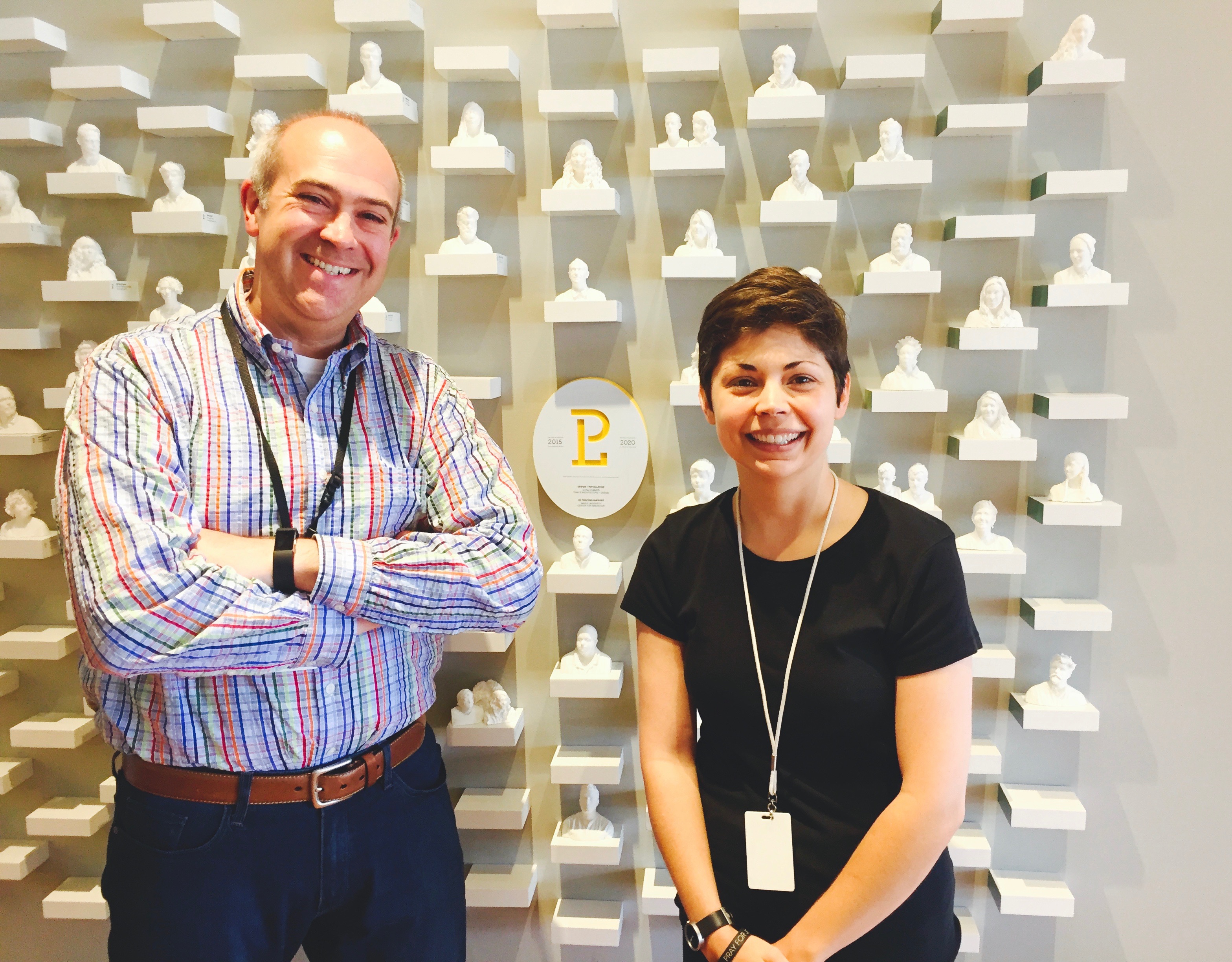
Writers and strategists create value when celebrating the thought leadership of others.
At my core, I’m a writer.
This phrase plays a key role in my identity and personal branding. It’s what I share with people meeting me for the first time. You’ll also see it across much of the marketing collateral promoting my creative services via SR Media.
While I work frequently as a maker, strategist and project manager, it’s my writing that unites the brand campaigns and interactive marketing projects that I help build, design and implement alongside designers and hackers.
Advocacy 100%
Team Building 80%
Client Services 40%
I’m also an experienced, long-form writer and my stories have been published in QZ/Atlantic Media, Fast Company and NY Mag among other major outlets.
In long-form, I aim to advocate innovative work and share thought leadership from disruptors in business, culture, design, science and technology.
Arguably, that’s the spirit driving much of my writing. I want to advocate the great work of the artists, business leaders, designers, developers I discover and meet on a regular basis. Sometimes, the people I first meet as a media writer also become valued collaborators.
Thanks to social media, advocacy is something many of us practice on a 27/7 basis without any extra effort. We re-tweet, become Facebook friends and add links to Pinterest boards to promote the enterprises, people, products and services we admire and support.
Yet, using your blogs, digital platforms and websites to solely promote yourself, your products, your services, rapidly becomes target marketing and like all marketing the struggle is to become sticky and grab hold of a viewer’s attention.
Recently, while watching a webinar on best practices for LinkedIn Company Pages, some of the key strategies toward building brand awareness, lead generation and engagement focused on sharing industry articles and thought leadership from respected peers. I still remember the anecdotal example shared by LinkedIn Content Managing Manager Alex Rynne. Basically, on LinkedIn, or any of your platforms for that matter, you do not want to be that person at the party who only talks about him or herself.
Actually, I’d like to take this LinkedIn Best Practice one step further. You build the most powerful network of advocates, colleagues, customers, influencers and partners when celebrating the thought leadership and work of others. More importantly, your network reflects how you live, work and create.
I’m still thinking about the incredible ideas and insights I shared from recent tech articles for Scripps/WCPO Insider. In a story on philanthropic innovation, Eric Avner, CEO and Chief Ambassador of the Cincinnati-based, philanthropic lab People’s Liberty, and Megan Trischler, Program Director at People’s Liberty, discuss how they are creating a new generation of social good entrepreneurs via a unique model of people-centered giving.
Michelle D’Cruz, who operates the community-centered design agency REVEB with her husband Leo J. D’Cruz, explains the creative and enterprise benefits when a company emphasizes diversity and inclusivity. Listening to Michelle D’Cruz describe her shift from mainstream marketing work to providing strategy to arts organizations and humanitarian non-profits, I understand that I’ve met a fellow creative professional who embraces the incredible value of advocacy.
Someone who makes the effort to advocate the work of the people around them is someone with a spirit for discovery.
Someone who regularly celebrates the thought leadership of others is someone who also celebrates their collaborators and teams more than their own efforts.
Listen, I’m not telling anyone to diminish their own flagpole projects, hustle and quality work. I just know that my best work revolves around a high-quality team.
An advocate can quickly build a quality team of analysts, designers, developers and managers. Self-promoters? You know, those annoying party guests who only talk about themselves? The ones I meet seem to have a harder time attracting the best and brightest.
Slowly, steadily, I’m seeing my Instagram posts, Pinterest boards and tweets in a different light. It’s not solely about followers, friends and likes.
What are you reading? What are you cooking? What are you watching? Targeting and delivering customized ads is no longer priority one.
You are only as valuable as your collaborators. Who are you advocating? What are you sharing? That’s what people want to know.
High-quality writers and strategists deliver valuable networks and nothing builds a strong network like advocacy.
SR Media is a creative hub for diverse design, writing and strategy services. Let’s start a conversation and discover if my work can bring value to your projects.
Email: steve@steveramosmedia.com
Why Writers Want To Be Makers and Makers Need to be Coders
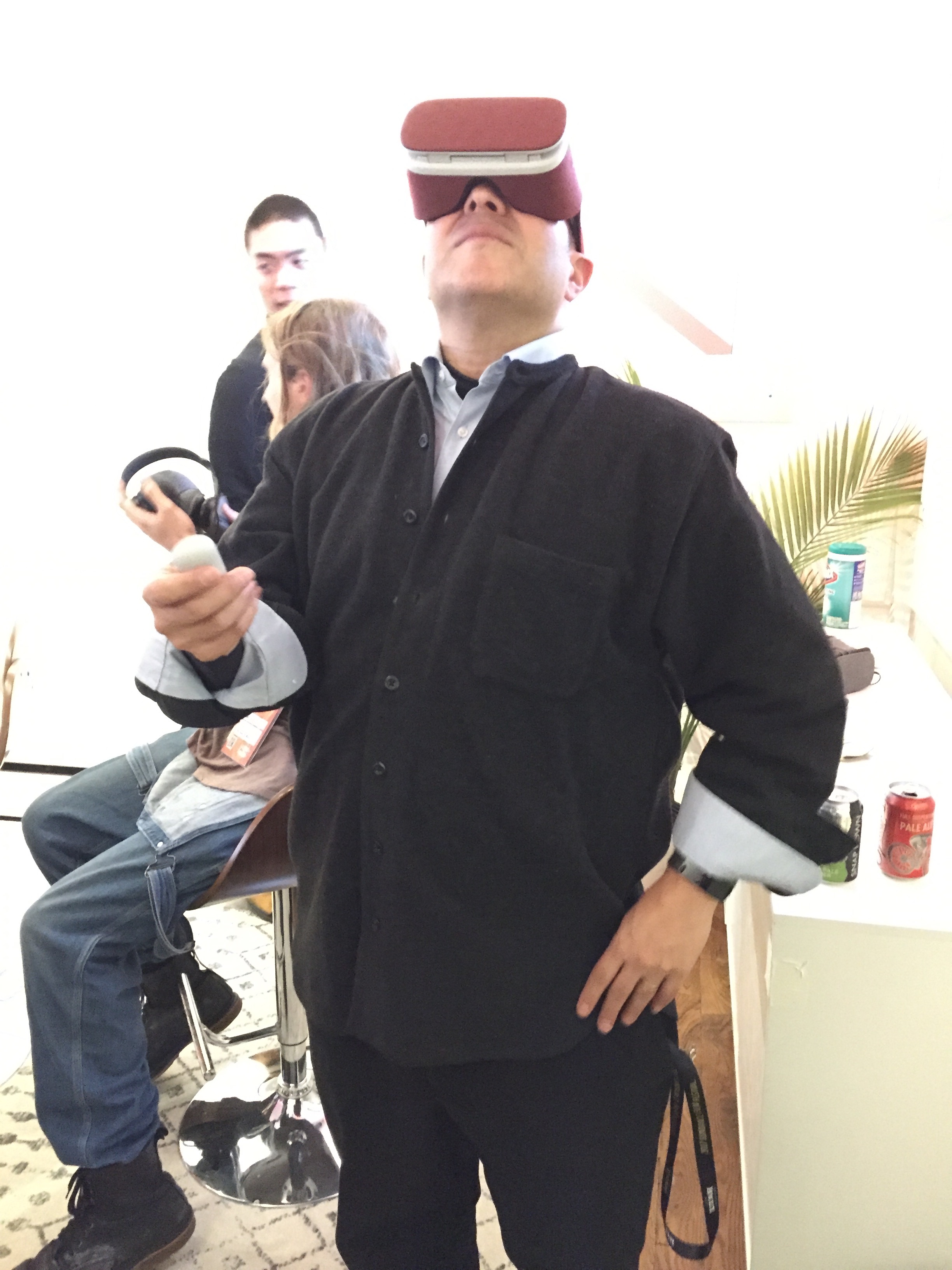
A Spirit for Discovery Drives My Desire to code in order to make things
During my Gladwell-inspired, 10,000 hours of storytelling; a lot more if you include discovery and interviews; there are choice ideas, phrases and quotes that continue to impact how I create, live and work. One of them is the concept of the Creative Shift, inspired by a ‘Fast Company’ story I wrote on film and TV writer/director Joss Whedon. Another is an idea shared with me by Wolfgang Hammer, Founder and President of Super Deluxe, a digital content studio owned by Turner Entertainment.
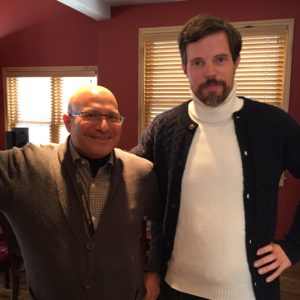
Steve Ramos (l) and Wolfgang Hammer, Founder and President of Super Deluxe, talk interactive storytelling at 2017 Sundance Film Festival.
“Writers want to be makers,” Hammer told me, speaking during a sprawling conversation about interactive storytelling at the 2017 Sundance Film Festival. Hammer pointed to his eclectic Super Deluxe team; many of them musicians and journalists who have transformed into interactive content creators. Hammer’s creative belief is that innovative people are consistently transforming and building bold career paths via new skills. They’re hybrid artists and hybrid artists have the tools to be successful across a variety of industries.
“Writers want to be makers.” I feel like I need to spray paint those words over the better-known quotes covering the walls of my Cincinnati coworking space.
When I talk about my experiences and projects, I begin by emphasizing that at my core I’m a writer and I strive for my writing to ignite clients and colleagues. Sometimes, my writing is in support of strategy, consulting and client services. It’s diverse, including brand launch campaigns, scripts for AR videos and any and all marketing materials. I’m also a long-form writer and my stories have been published in ‘QZ/Atlantic Media,’ ‘Fast Company’ and ‘NY Mag.’
My status as a writer and maker is authentic thanks to a ten-month collaboration with valued colleagues including Ryan Cayabyab, Sean C. Davis and Jason Snell on an interactive marketing product in the cultural tourism industry.
Our interactive marketing product, The Brewing Heritage Trail (BHT), is a digital, self-guided version of a cultural tour celebrating Cincinnati’s Brewing heritage throughout the Over-the-Rhine.
The BHT app is in market via Google Play and the App Store and data reports are providing valuable insights regarding in-app usage. More importantly, our lean product team can speak to designing, building and bringing our interactive product to market in ten months.
This ignites a new concept, one that extends Hammer’s idea to the next level. Writers want to be Makers and Makers aim to be Full-Cycle Innovators.
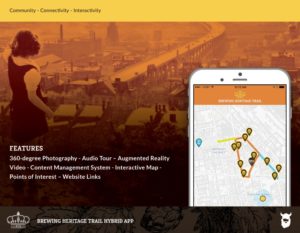 There’s another idea ignited by this project and the interactive marketing product it helped bake. Design Agencies need to become Interactive Agencies in order to be sustainable in the 21st century. However, the creative business transformation does not stop at one phase. Interactive Agencies need to become Interactive Product Companies in order to be fully successful over the long term.
There’s another idea ignited by this project and the interactive marketing product it helped bake. Design Agencies need to become Interactive Agencies in order to be sustainable in the 21st century. However, the creative business transformation does not stop at one phase. Interactive Agencies need to become Interactive Product Companies in order to be fully successful over the long term.
Now, the writer who becomes a maker in order to help architect an Interactive Product Company has another creative shift to accomplish.
Since the wrap of The BHT project, team members and I continue to collaborate on internal review and scorecard sessions. We outline benchmarks exceeded, those benchmarks met as well as those missed by the team.
I’m proud to report that BHT was on time and on budget. The client’s closing paperwork calls BHT “high quality.” More importantly, valued colleagues from corporations, startups and venture capital firms describe our interactive product as “magic in a bottle.”
Looking back on the project’s ten months, I can trace how my writing shifted towards an emphasis on strategy. I can also map how my strategy extended to project management as well as client services in order to keep the project on schedule. The Full-Cycle Innovation work ignites Full-Cycle transformation. Writers want to be makers and makers need to be coders.
During team reviews, lead developer Sean C. Davis and I discussed ways for my project management to be more effective for the development team since our budget did not allow for a separate technical project manager. Davis and other developer colleagues like Eric Boggs continue to share the same creative advice for me. In order to be a more successful writer and help make my project management and client services skills more useful to project teams, I have to become a better coder.
Basically, in the 21st century, writers have to be coders. Now, while architecting our new product company and writing launch campaign assets, marketing collateral and operations documents, I’m also activating my spirit for discovery via Code School courses in order to refresh my fundamentals around HTML and CSS before adding new JavaScript and Ruby skills.
From a practical perspective, I want to be a better project manager and keep our product team lean by adding some technical manager duties to my plate. My creative agenda goes back to the insights shared by Super Deluxe’s Hammer. I believe that writers want to be makers. I know that nothing makes me more excited than the chance to keep collaborating with designers, developers, analysts and researchers in order to enhance, improve and make an exciting new version of our interactive product.
Thanks to encouragement and insights from colleagues like Boggs and Davis, I can take this concept to the next level. Writers who are makers have to be coders. Where will this all lead? Let’s reconnect in six months and I’ll share my coding report card.
SR Media is a creative hub for diverse design, writing and strategy services. Let’s start a conversation and discover if my work can bring value to your projects.
Email: steve@steveramosmedia.com
SR Media Ignites Media Innovation on a Global Scale via International Visitor Leadership Program
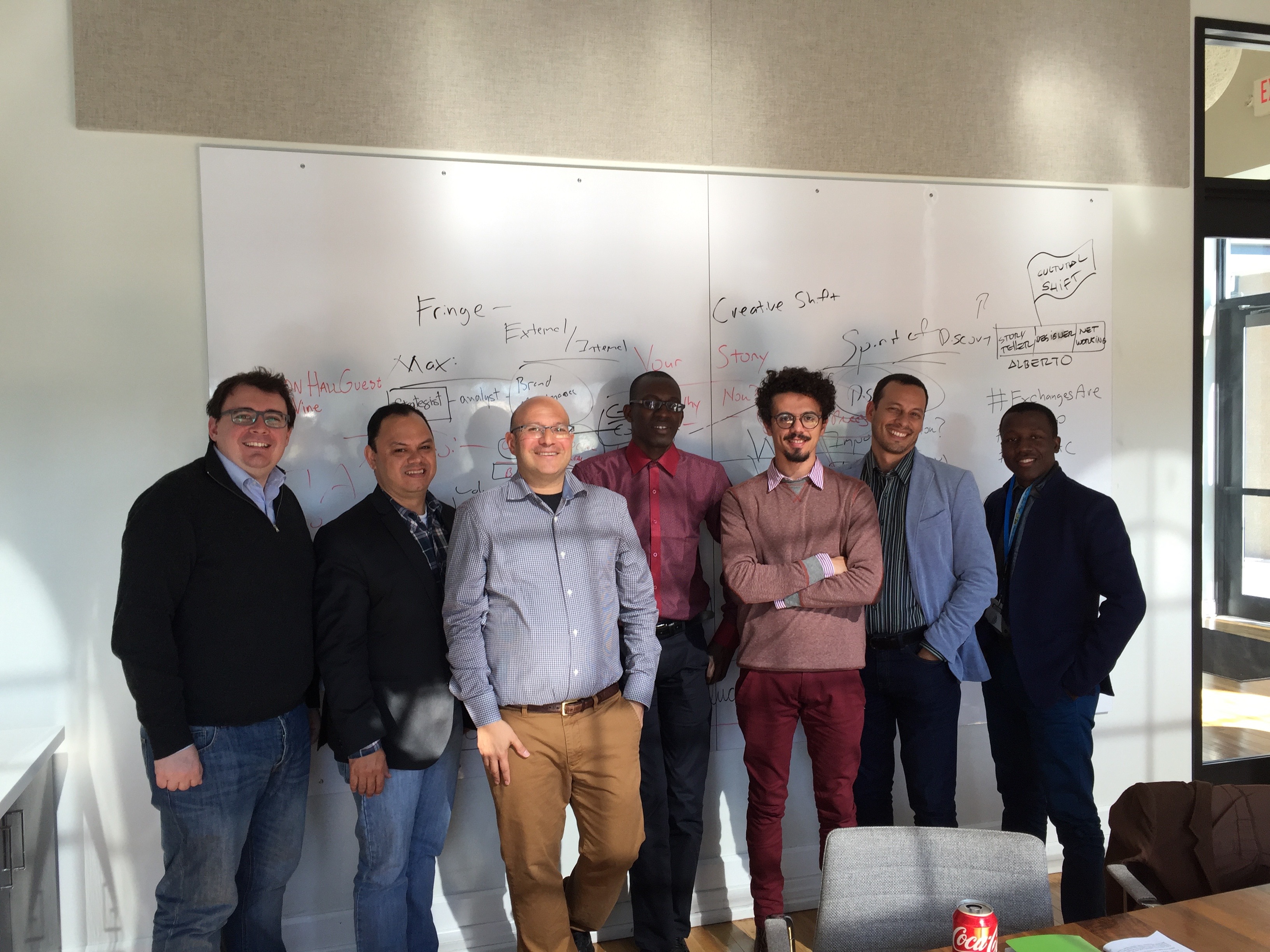
The creative contractors, entrepreneurs and investors who make up the startup ecosystem known as StartupCincy work elbow-to-elbow in the entrepreneurial hub known as Union Hall, a multi-building complex in Cincinnati’s Over-the-Rhine neighborhood.
The restored wooden floors, second-floor beer hall and rooftop deck provide the perfect backdrop for a workshop about digital media concepts including crowd-sourced journalism, interactive tools and walkable storytelling projects for mobile platforms.
My Union Hall workspace is a collaborative environment that helps ignite innovation. It’s also a sleek office space that sparks the imaginations of the six international media pros visiting Cincinnati for ideas and inspiration.
This spring, after hosting a workshop with the U.S. Department of State International Visitor Leadership Program in collaboration with the Greater Cincinnati World Affairs Council, I’ve been thinking about the increasing accessibility, affordability and availability of digital products and services for media pros. From Nicaragua to Senegal, media professionals are making powerful use of the storytelling tools at their disposal. More importantly, I continue to be impressed by the innovative work produced by content creators across the globe no matter their budgets or staffing resources.
Listening to the brief intros from visiting international media professionals including, Rafael Antonio Gomez Torres, Social Media Editor, Diario Panorama, Venezuela; Cisse Mountaga, CEO, ITmag, Senegal; Alberto Antonio Sanchez Arguello, cyber activist, Politicamente Incorrecto, Nicaragua; Marco Piscitello, Video Reporter and Managing Editor, Fanpage, Italy; Vagner De Alencar Silva, Co-founder, Mural Journalism Agency for the Favelas, Brazil; and Max Guybert Lyron, Communications Director, Ministry of Foreign Affairs, Haiti, I’m impressed by their commitment towards interacting with their communities.
Of course, if you want to ignite innovation around building, designing and implementing storytelling products and services, everyone needs to share their creative work.
A Creative Share on a Global Scale
Vagner De Alencar Silva reveals how his journalism agency gives voice to Brazil’s most vulnerable residents living in the country’s largest favelas. Fanpage Managing Editor Marco Piscitelli speaks openly about transforming Italy’s machismo culture into a place where women are treated fairly and respectfully. Max Guybert Lyron, Communications, Ministry of Affairs, Haiti, explains his workflow for alerting as many Haitians as possible during a time of emergency. Their presentations are just three examples of the visiting group’s impressive media projects.
The project I share is the Brewing Heritage Trail, an interactive product and walkable storytelling for mobile platforms service for a cultural and historical tourism trail located just a handful of blocks north of our Union Hall location.
My case study involves a lean digital team of five design professionals working ten months to build, design and implement a digital version of a historic trail featuring Cincinnati’s pre-prohibition breweries.
As a client case study, the Brewing Heritage Trail revolves around beer, brewing history and tourism. As an interactive marketing product, its’ focus is community, connectivity and interactivity via a package of digital assets affordable for a small cultural non-profit.
The Brewing Heritage Trail makes powerful use of storytelling assets like 360-degree photography, an augmented reality video; a unique content management system, interactive map and points of interests.
The visiting international media professionals enjoy the 360-degree photography that bring to life the 19th-century brewery cellars dug deep beneath the streets of Cincinnati’s Over-the-Rhine neighborhood. They’re also excited to learn about next steps strategy involving murals ignited by augmented reality tools and historic bottling plants transformed by beacon software.
The visiting international media professionals respond enthusiastically to our team’s unique content management system; excited by the possible uses at their media companies.
After additional talk about GPS software, design specifications and our team’s commitment to designing a digital platform leaner than a mobile app, we break for closing comments, a design exercise and group photos.
Building a Global Community of Influencers
My take away lesson for the International Visitor Leadership group is that innovative media doesn’t rely solely on the latest tech around Augmented Reality, Mixed Reality and Virtual Reality.
In fact, building and designing products and services lean and low-fi will inspire you to be even more innovative with your resources.
Perhaps, that’s the creative bridge that unites all of the media professionals at the workshop no matter the medium, product or scale of business.
We aim to connect and interact with our communities with accessible, affordable and available media products and services. Tech razzle-dazzle has client and sales cycle benefits. However, designing storytelling work that’s grounded, useful and valuable for our communities is the ultimate goal in every language.
I collaborated with The U.S. Department of State International Visitor Leadership Program in collaboration with Greater Cincinnati World Affairs Council on a design workshop.
Let’s talk about workshops that can help your business.
Email: steve@steveramosmedia.com Phone: 1- 513-295-4488 Skype: steveramosmedia
